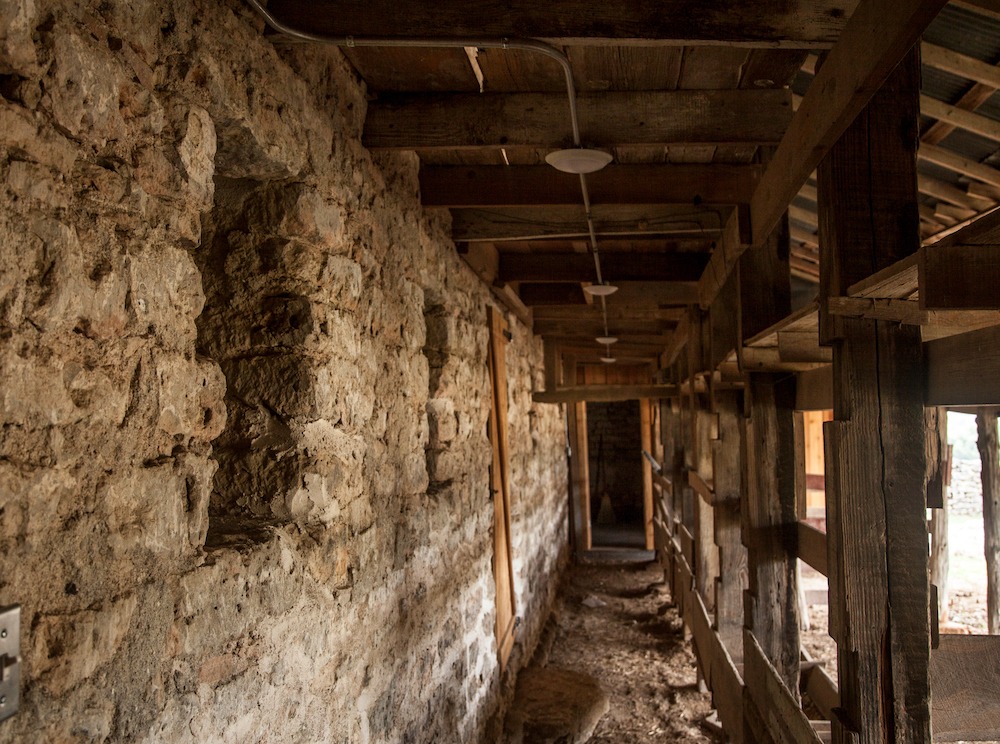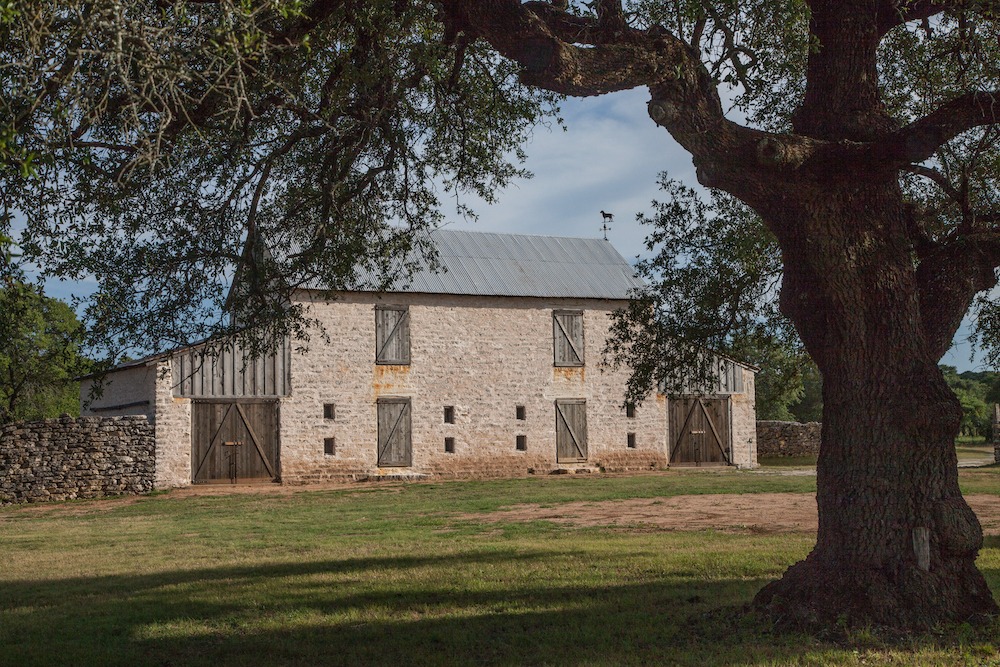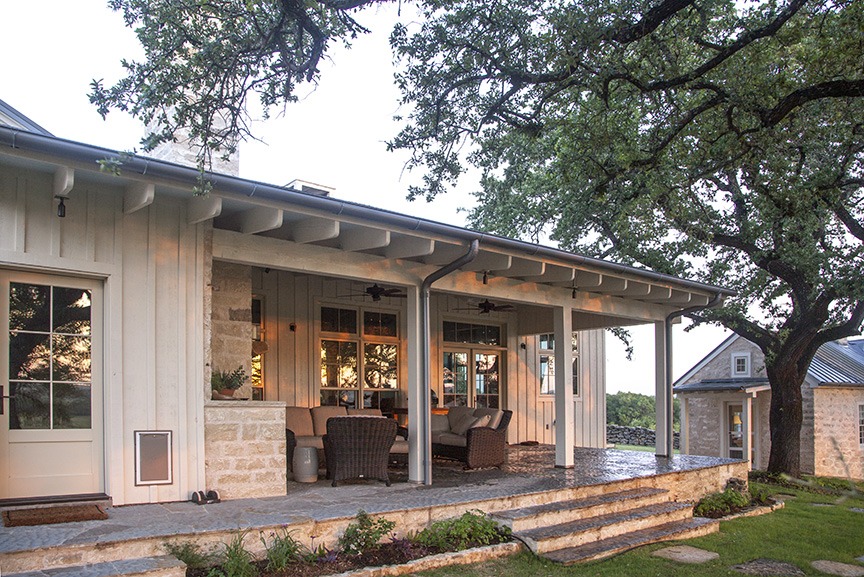Questad Farm in Bosque County, Texas: A Case Study
Words: Carrie Snider, Peter Larsen, Karl Questad, Sedsel Questad, Gustav Belfrage, King V, Stephen Chambers, Evan Thompson, Philippe Lalonde, Dr. Hafertepe, Herminio Espinosa, Jason Procter
Words: Carrie Snider
Photos: Peter Larsen Photography
In the 1850s, immigrant families from Norway were on their way Bosque County, Texas. The area’s plentiful wood, water, and soil beckoned them. And come they did, taking advantage of the large land grants from the state.
One of the families, Karl and Sedsel Questad, arrived in 1854. They promptly got to work on their newly acquired 237-acre parcel to make it their own. Karl was a stonemason, blacksmith, and furniture maker, all evident by what he left behind. Some of Karl’s handmade furniture and personal artifacts are on display at the nearby Bosque Museum in nearby Clifton.
To create lasting structures on his land, Karl used nearby limestone that he quarried, as well as mortar, from his own lime kiln. In the style of Norwegian stone building, he constructed a two-section house, detached kitchen/springhouse, carriage house/blacksmith shop, and two-story barn—all located on about four acres of the property.
Over the years, the couple hosted incoming immigrants who stayed at the farm temporarily as they got settled. In turn, the guests helped the Questads stack the impressive rock fence, which in places reaches 8-feet high.
Creating Connections
Likewise, Norwegian pioneer neighbors tamed their land into fruitful farms. Still visible old wagon ruts show the connection the families had with each other. The area became a true community of immigrants thriving in a new country.
Karl was friendly with American Indians of the time, but in 1867 he and young helper Ole Nystel were chased by Comanche. Thankfully Karl was able to get away by jumping off a high bluff, though he received a shot in the arm. Ole received an arrow to the leg, was captured, and after three months was ransomed.
While building their home in the U.S., the Questads kept a strong connection with their home country. They sent fossils and Indian artifacts to a museum in Norway for display. In the 1870s, Gustav Belfrage aka “Belfrog the Bug Catcher” visited from Sweden and stayed at Questad Farm. He collected beetles and moths on the property and sold them to museums around the world. The Smithsonian holds his papers and personal collection.

Sometime between 1875 and 1885, the group of Norwegian immigrants in Bosque County established the nearby Our Savior Lutheran church as a place to worship and gather. By 1900, the community of Norse was home to the largest Norwegian settlement west of the Mississippi River. Those pioneers, including the Questads and Belfrage, are buried next to the farm on land donated by the family.
Questad Farms in Modern Times
Amazingly, Questad Farm still looks much like it did over 160 years ago. The land is full of pastures, wooded areas, seasonal creeks, and a natural spring. Unlike any other property, five of the original Questad stone buildings and hundreds of feet of stone walls are still intact.
King Olaf V of Norway visited the cemetery in 1982 to pay homage to the Norwegian pioneers buried there. The next year, Questad Farm was added to the National Register of Historic Places. It is truly a memorial to the perseverance and ingenuity of the settlers who tamed the land so long ago.
Questad Farm stayed in the family until the 1980s. It is now owned by Steve and Leslie McConnico of Austin. As a second home, the property has been an oasis for their family to spend time making memories. All the while, they’ve researched the history of the place and envisioned carrying on the history as they make it their own.
Their ultimate goal was to restore all the buildings to their original magnificence, while creating additional, modern living space for the family to gather.
Restoration Work
Restoring the stone buildings to their former glory, as well as making them more inhabitable for modern needs, was no easy feat. Stephen B. Chambers, AIA, founder of Stephen B. Chambers Architects, Inc., was the architect on the project.
The architect also consulted with Evan Thompson of Preservation Texas, and Fort Worth engineer, Philippe Lalonde, for help in keeping the project authentic. Dr. Kenneth Hafertepe, chair of the Baylor University Department of Museum Studies, also visited the site in 2015 to offer his expertise of local knowledge.
In 2016, the work began and took 10 months to complete. Much of the stone used for the restoration was quarried on the ranch, just as it was over one hundred and sixty years ago—adding to its authenticity. Granbury stone was used to join the two antique pens inside the house, and white mortar mixed with local sand.
Chambers explained some of the plans: “Keep the integrity of the two original masonry rooms intact and feature them in the design to accommodate the modern living spaces. Plaster that was used on the exterior in more recent history was removed to feature the original historic stonework. The walls became the interior walls of the family room in the modern renovation.”
The dry stack walls outside were repaired with weathered surface stone found on the property and stacked to match the antique walls. Blue Oklahoma Flag Stone was used for the patios.
Stonemason Herminio Espinosa, of Jason Procter Construction, described the buildings on the Questad Farm as an “intricate work of art.” While it was evident to him that Questad did high quality masonry work that stood the test of time, being subjected to the elements over 160 years can take its toll.
“There was much care taken in its restoration,” Espinosa said. “What was there was sturdy and strong, but we needed to rebuild, repoint, and add new stone to match.”

On the house, two additions were removed to make way for an open family room and kitchen with a beautiful view of the farm. New porches were added and offer a great gathering place for the new owners’ family. The house’s attic now conceals ductwork for new central heat and air.
Modern amenities such as bathrooms, proper insulation, and climate control were a much-needed upgrade to make all the spaces more livable. For the outbuildings, which are used as guest houses, ductless mini-split systems were used in order to keep beams exposed and keep the historic feel of each structure.
Original materials such as flooring were kept, as well as oak joists hand-worked by Jason Procter as mantels. Even Karl’s original handmade door latches were preserved on the home. Some of his craftsmanship is proudly on display in the home as the owners celebrate the historical significance of the home and its original builder.
Unfortunately, the big barn on the property suffered a fire at some point in the past, offering its own challenges for restoration.
“We changed the 18”x48”x12” headers for the opening with local stone,” Espinosa said. “There were other minor repairs and repointing the entire structure with the white mortar and local sand.”
When it was all said and done, the McConnico family is pleased with the result of the restoration. The hard work and care taken to preserve the buildings will allow them to be enjoyed for many years to come. Even more important, this historic farm has been preserved as part of the original built environment of our country.

Espinosa added: “We all were very proud of the finished Questad Farm.”
No doubt, Karl and Sedsel Questad, along with their many Norwegian neighbors, would also be proud of the farm and the preservation of their masonry skills, which they brought to Bosque County.